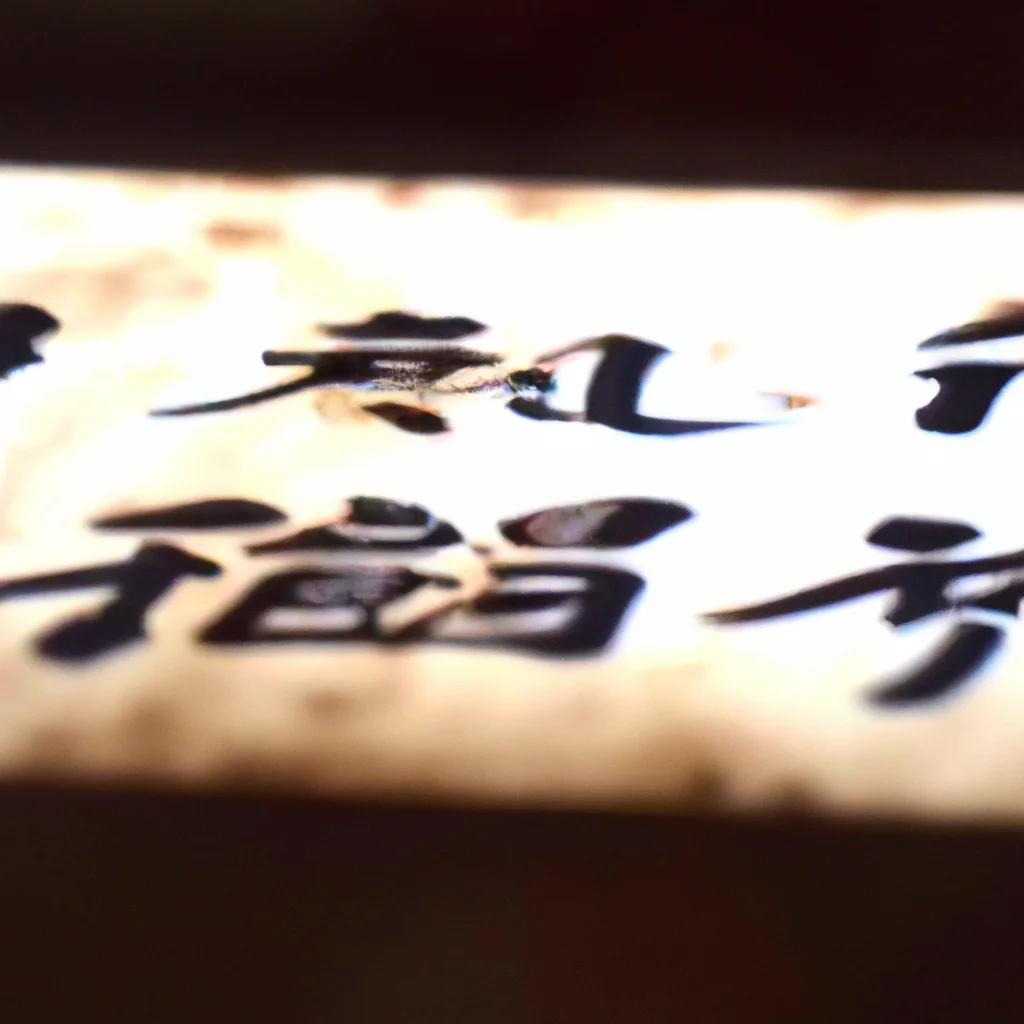What is the history and significance of Chinese calligraphy?


What is the history and significance of Chinese calligraphy?
Chinese calligraphy is a unique and intricate form of traditional Chinese art that has been around for over 3,000 years. Its significance in Chinese culture cannot be overstated, as it is considered one of the highest forms of artistic expression, and it has played a crucial role in shaping the Chinese identity and culture. In this article, we will explore the history and significance of Chinese calligraphy, as well as the different techniques and styles used in this beautiful art form.
History of Chinese Calligraphy
Chinese calligraphy can be traced back to the Shang Dynasty (1600-1046 BC), where the earliest known examples were found on oracle bones used for divination. Over the centuries, it evolved into a sophisticated art form, with many different styles and techniques developed by master calligraphers. During the Tang Dynasty (618-907 AD), Chinese calligraphy reached new heights, with the creation of the “Eight Immortals of the Wine Cup,” a group of calligraphers who were considered to be the greatest of their time.
Throughout the centuries, Chinese calligraphy was not only used for artistic expression but also for practical purposes, such as writing letters, recording historical events, and creating official documents. It was also used in religious and spiritual contexts, such as writing Buddhist sutras and Taoist texts. Today, Chinese calligraphy remains an important part of Chinese culture, and it is still widely practiced and appreciated by people all over the world.
Significance of Chinese Calligraphy
Chinese calligraphy is considered one of the highest forms of artistic expression in Chinese culture. It is highly valued for its beauty, elegance, and spiritual significance. In traditional Chinese society, calligraphy was also seen as a mark of education and refinement, and it was a necessary skill for scholars, officials, and literati. In fact, Chinese calligraphy was one of the “Four Arts” that were considered essential for a cultured person in ancient China, along with painting, poetry, and music.
Chinese calligraphy is also significant because it is closely tied to the Chinese writing system. Chinese characters are made up of strokes, and calligraphy is the art of creating these strokes in a beautiful and expressive way. Calligraphy is not just a matter of writing characters correctly; it is also about creating a visual representation of the meaning and spirit behind the words. As such, calligraphy is considered a form of visual poetry, and it is often used to express deep emotions and philosophical ideas.
Calligraphy Techniques
There are many different techniques used in Chinese calligraphy, each with its own unique style and character. One of the most important techniques is brushwork, which involves using a brush and ink to create characters with varying thickness and shades. The brush is held at an angle, and the calligrapher uses a combination of wrist and arm movements to create the strokes.
Another important technique is seal carving, which involves carving characters into a seal stone and using it to make impressions on paper or other materials. Seal carving is often used for official documents and signatures, and it is considered a highly skilled and respected art form in its own right.
Calligraphy Styles
There are many different calligraphy styles in Chinese calligraphy, each with its own unique characteristics and history. Some of the most famous styles include:
– Kaishu: This is the standard script used in modern Chinese writing, and it is characterized by its simplicity and clarity.
– Xingshu: This is a semi-cursive script that is more fluid and expressive than Kaishu, but still legible.
– Caoshu: This is a cursive script that is highly stylized and difficult to read, but very expressive and artistic.
– Lishu: This is a formal script that was used for important documents and inscriptions, and it is characterized by its dense, uniform strokes.
Conclusion
Chinese calligraphy is a complex and beautiful form of traditional Chinese art that has played a significant role in shaping Chinese culture and identity. It has a rich history spanning over 3,000 years, and it is still widely practiced and appreciated today. Chinese calligraphy is not only a form of artistic expression but also a reflection of the Chinese writing system and philosophy. With its many different styles and techniques, Chinese calligraphy remains a fascinating and important part of Chinese culture and heritage.
Recent Posts
How do I create an engaging and informative online quiz or assessment?
Creating an engaging and informative online quiz or assessment can be a powerful tool for… Read More
What are the most effective methods for managing and reducing work-related stress in the hospitality industry?
Work-related stress is a common issue in the hospitality industry, where employees often face long… Read More
How can I improve my assertiveness and communication skills in a leadership position?
In a leadership position, assertiveness and effective communication skills are crucial for success. Being able… Read More
What are the key elements of a successful employee recognition and rewards program?
Employee recognition and rewards programs play a crucial role in motivating and engaging employees, as… Read More
How do I effectively manage and respond to customer feedback and reviews?
Customer feedback and online reviews play a crucial role in shaping a company's reputation and… Read More
What are the best strategies for effective time management as a stay-at-home parent?
Effective time management is crucial for stay-at-home parents who juggle multiple responsibilities on a daily… Read More